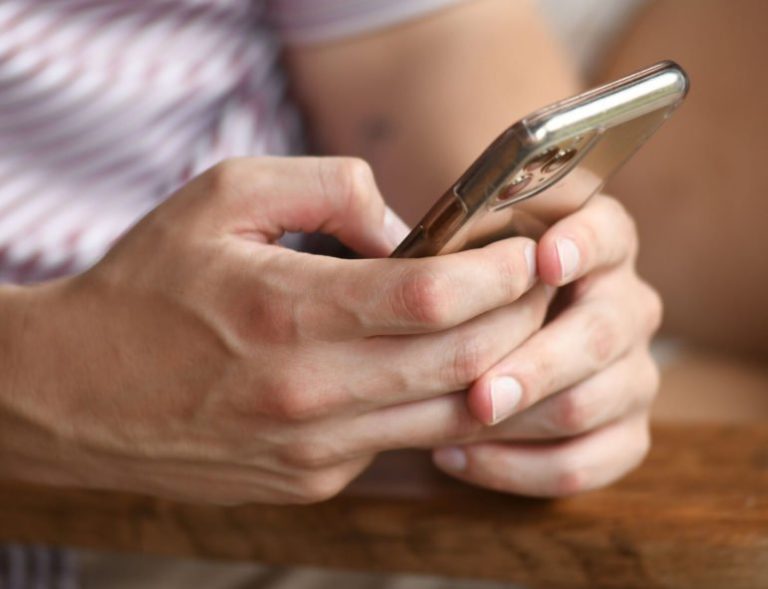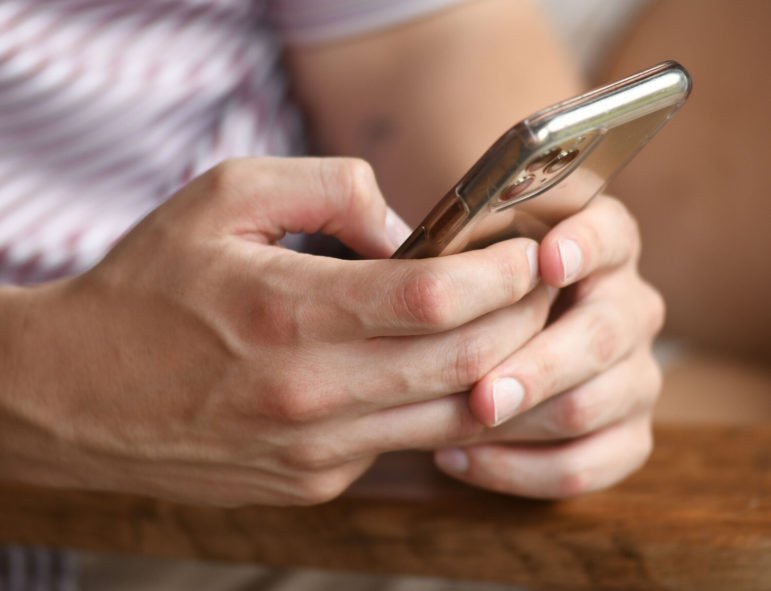

Bruce Newman/MCIR
Johnny Douglas, a University of Mississippi student in the MBA program, said the presence of roommates made it difficult to achieve privacy during his telemental health sessions.
University of Mississippi student Johnny Douglas of Oxford was worried that his therapy for depression and anxiety might stop in its tracks when the COVID-19 pandemic started.
Instead, beginning in March, his private counselor and his psychiatrist tried out a method of meeting that didn’t involve Douglas leaving his apartment—wireless telehealth counseling and medication sessions – a mode of treatment that exploded in numbers in Mississippi during shelter-in-place orders.
Numbers aren’t available for the increase among patients like Douglas treated via telehealth through private insurance, but among those covered by Medicaid, the numbers soared.
“In state fiscal year 2019 there were 6,078 total telehealth visits for mental health services. By contrast, between March 1 and May 25 of this year – roughly three months – there were at least 14,852 telehealth visits for mental health services,” said Matt Westerfield, communications director for Medicaid.

Bruce Newman/MCIR
Johnny Douglas, a student in the MBA program at the University of Mississippi, had come to rely on counseling to help him deal with his anxieties and worried he’d lose that support when the pandemic shut down his therapist’s office. But he was able to continue his sessions via telehealth until he could resume in-person sessions.
Douglas at first was not enamored with the idea of using telehealth. But he had been seeing his counselor once every two weeks since January and didn’t want to lose that support he’d had since he’d begun going in November for stresses from law school and a bad breakup. He graduated from law school this summer and is now in the MBA program.
“I feel like it kept me in the habit of going,” Douglas said. He said that while he didn’t make as much progress as he would have liked in his treatment, it kept him from regressing into a deeper episode
Mississippi authorized the use of telehealth one or more chronic conditions, as defined by the Centers for Medicare and Medicaid Services, including mental health. It also requires health insurance or employee benefit plan to charge the same deductible, co-payment, or coinsurance for a health care service provided through telemedicine as it does for in-person consultation.
But the main block to Mississippi mental health centers using telehealth regularly before this time was that Medicaid did not reimburse centers for much of the care delivered over telehealth, insisting that the patient be seen in person by a clinician.
That changed when Mississippi’s Division of Medicaid put in place an Emergency Telehealth Policy on March 20, 2020, in response to the pandemic. “Essentially, the emergency policies temporarily increase the number of services eligible for telehealth and give providers the flexibility to deliver those services via audio only modes of communication,” said Phaedre Cole, executive director for Region 6 Community Mental Health Center and board president for the Mississippi Association of CMHCs.
“With regard to mental health, this ability to access services from their home is particularly crucial because beneficiaries can limit unnecessary travel and potential exposure to coronavirus while maintaining regular support,” Westerfield said. “Virtually every mental health service covered by Mississippi Medicaid can now be accessed through telehealth, programs such as individual therapy, group therapy, psychosocial rehabilitation, and peer support.”
Such emergency policies were to end June 30, Cole said. ”It is our hope that these emergency policies will be extended.”
Westerfield noted that the number of beneficiaries has not increased—simply the number of times they have used telehealth. “From what we can tell, there doesn’t seem to be a noticeable increase in the number of beneficiaries receiving mental health services as a result of telehealth because the volume of billing claims is comparable to pre-COVID-19 months.”
Cole noted that the visits are provided through whatever avenues are available to the center and the patient, including FaceTime, Skype, GoToMeeting, or simply in a phone conversation.
The use of telehealth or telemedicine in mental health treatment already was a topic of discussion before the pandemic. A 2016 analysis published in the National Institutes of Health’s Telemedicine Journal and E-Health explored the use of “telemental health” in treating mental disorders as a way of mitigating such factors as the critical shortage of mental health professionals. According to the study, there’s an estimated shortage of 10,000-20,000 psychiatrists in the United States with even more serious shortages of child and adolescent and geriatric psychiatrists.
The analysis assessed the merit of using telemedicine in terms of feasibility, acceptance, effects on medication compliance, health outcomes and cost. The global cost of mental health disorders, according to the analysis, is projected to reach over $6 trillion this year. The analysis was based on a review of 22 studies into the feasibility and acceptance of telemental health, seven that investigated medication adherence and five with cost. All feasibility and acceptance studies reached similar conclusions regarding satisfaction, and all treatment adherence reported positive results in terms of medication compliance. Cost-effectiveness and cost savings appeared to be volume sensitive with the minimal volume savings being 250 consultations.
In Mississippi, while the telehealth visits have dramatically increased since the beginning of the pandemic, barriers still exist for mental health patients seeking care, Cole said. “Many of our clients lack broadband access, do not possess the skills or equipment needed to engage in telehealth services, have limited data plans, and/or do not want to erode cellphone plan minutes on frequent or lengthy telephonic contacts. In addition to the technological challenges, valuable clinical information can be lost in a telephonic only encounter. For instance, nonverbal cues are missed, and rapport can be more difficult to establish.”
Douglas said early attempts at his telehealth visits were plagued by technical problems, with him not being able to log into the clinic’s telehealth software. He and his providers finally resorted to FaceTime on his cellphone to accomplish his sessions.
“It’s been an adjustment,” Douglas said. He said that the presence of his roommates sometimes made it difficult to achieve the privacy he felt he needed to discuss his difficulties.
Mental health experts understand that social isolation can have devastating consequences on people’s mental and physical health, according to Cole. Cole said that experts hope the reduction of cases in coronavirus will enable face-to-face communications soon between patients and clinicians. “The pandemic has forced social isolation upon the masses. While telehealth and telephonic services provide some level of human contact, it does not replace the benefits of face-to-face interventions.”
Douglas said he began regular in-person sessions again last week and was glad of it. “It was weird to have therapy in my room,” Douglas said. “I don’t know that I got as much out of it.”
This story was produced by the Mississippi Center for Investigative Reporting, a nonprofit news organization that seeks to inform, educate and empower Mississippians in their communities through the use of investigative journalism. Sign up for our newsletter.
The post Telemental health visits soar. Is it a stopgap measure during pandemic or roadmap for the future? appeared first on Mississippi Today.
- Legislative watchdog: Mississippi prisoners likely receive inadequate dental care amid chronic staffing shortages, weak monitoring - December 19, 2025
- ¿Llamar al 911 o arriesgarse a perder al bebé? Redadas obligan a algunos inmigrantes a evitar la atención médica - December 19, 2025
- Northeast Mississippians reflect on how they want their communities to change - December 19, 2025